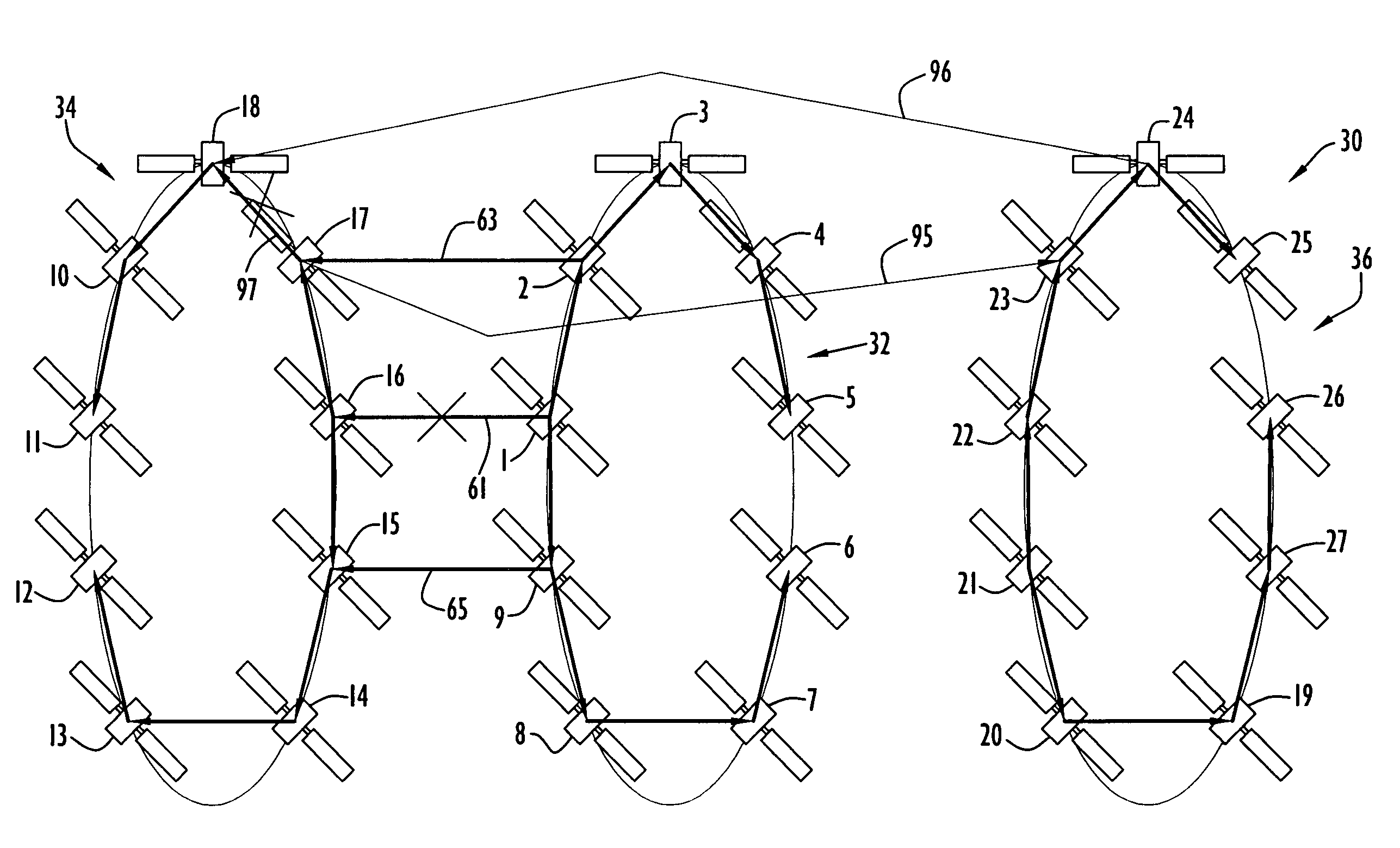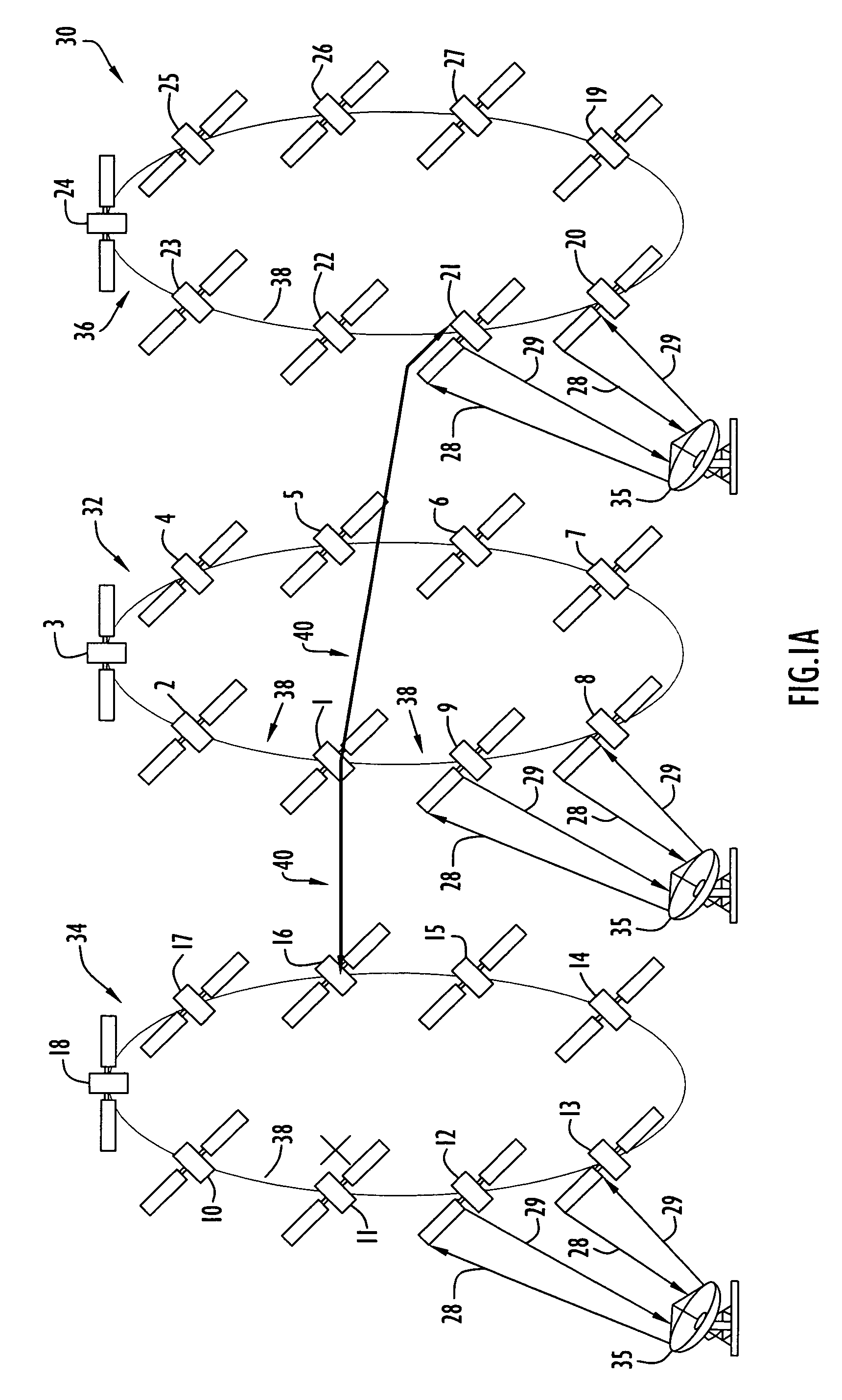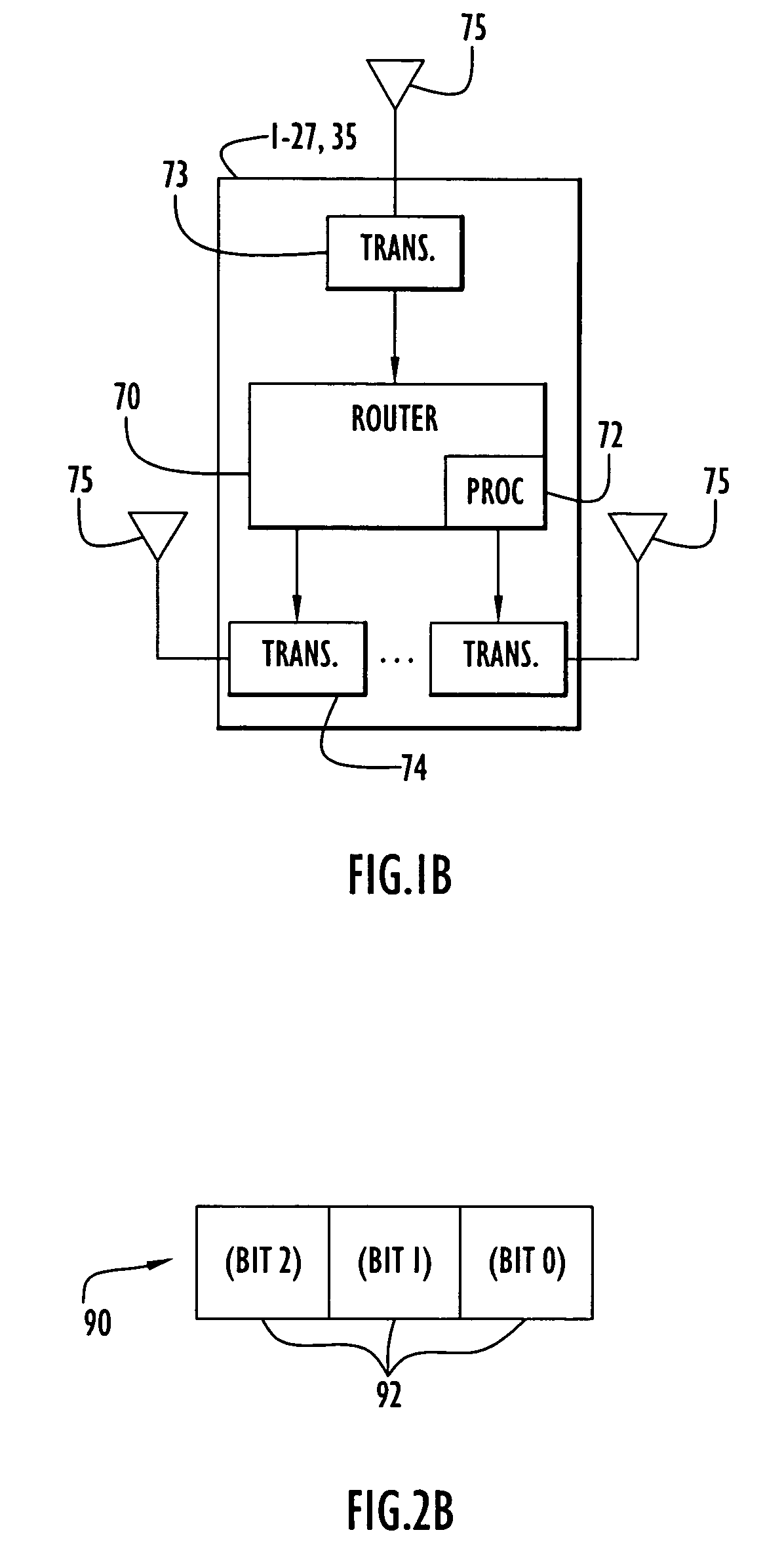Method and apparatus for multicast packet distribution in a satellite constellation network
- Summary
- Abstract
- Description
- Claims
- Application Information
AI Technical Summary
Benefits of technology
Problems solved by technology
Method used
Image
Examples
Embodiment Construction
[0028]Current satellite systems may contain constellations of satellites in multiple orbital planes. These systems require the ability to communicate the same data to multiple satellite nodes in a combined space / ground network. Examples of such systems include the Global Positioning System (GPS), Space Based Infra-Red System (SBIRS), and Galileo. These large satellite constellations may employ the present invention multicast distribution for a variety of situations. For example, multicasting may be employed when data is recorded by sensors resident on one satellite and this data needs to be distributed to the remaining satellites in the constellation or a sub-set of satellites in the constellation. Multicast distribution provides much more efficient crosslink bandwidth utilization than individual unicast distribution or flooding when large amounts of data are distributed.
[0029]Another example of the use of the multicast distribution in a combined space / ground network may occur when ...
PUM
 Login to View More
Login to View More Abstract
Description
Claims
Application Information
 Login to View More
Login to View More - R&D
- Intellectual Property
- Life Sciences
- Materials
- Tech Scout
- Unparalleled Data Quality
- Higher Quality Content
- 60% Fewer Hallucinations
Browse by: Latest US Patents, China's latest patents, Technical Efficacy Thesaurus, Application Domain, Technology Topic, Popular Technical Reports.
© 2025 PatSnap. All rights reserved.Legal|Privacy policy|Modern Slavery Act Transparency Statement|Sitemap|About US| Contact US: help@patsnap.com



